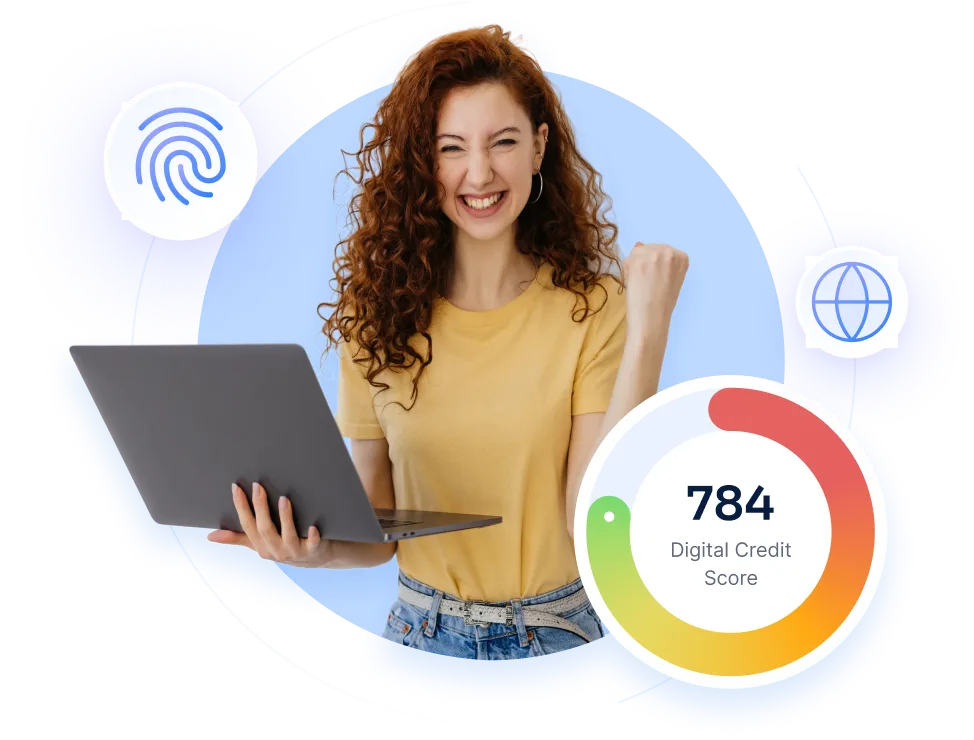Peer-to-peer (P2P) lending is becoming an increasingly popular alternative to traditional bank loans.
%20(1).webp)
With innovative fintech solutions, borrowers no longer need banks. Instead, they connect directly with investors on P2P lending websites. For quick cash loans, unsecured personal loans, and even business funding solutions. Lenders, on the other hand, enjoy higher returns on their cash savings.
The global P2P lending market is growing fast and is projected to reach over US$ 919.73 billion by 2032 with a registered CAGR of 26.50% from 2023 to 2032. By 2050 its value is expected to be around one trillion US$. There is a clear need for more straightforward, inclusive, and equalizing financial services.
Sharing economy has proved a game-changer in many industries. But this time it’s the lenders, not the banks, who bear the major risk of loan defaults. So the next-gen money lending platforms better be risk-free!
Traditional banks bar the borrowers with no credit history or scarce financial information. That hurts the most vulnerable - migrants, people with special needs, and other good-willed individuals. At the same time, bad players would often game a system that is unable to detect fraudulent patterns.
This divide shows how outdated the processes of brick-and-mortar lending are. In the meantime, alternative data sources are available to ensure better inclusiveness and lower entry risk. Digital footprint analysis is a complex method used to assess creditworthiness.
%2520(1).webp)
So what exactly is digital footprint? The Internet keeps memory of all our activities: accounts we create, sites we visit, files we share, interactions we have, devices we use. It creates a unique pattern of our preferences, behavior, and even financial situation. The traces we leave over time form our digital universe that holds the insights of who we are.
Digital footprint analysis - or digital footprinting - can reveal our behavior, traits, inclinations and much more. Digital footprinting is valuable for background checks. Unlike the data filled in the physical form, our digital footprint cannot be falsified. Moreover, in the world of online-first, it tells more about a person than face-to-face communication with someone we don’t know. Bottom line, it tells a legit person from synthetic identity.
.webp)
Digital footprint analysis works with various data points - an email address, phone number, or social media handle. It analyzes their occurrence online.
Certain things are red flags, indicating suspicious online behavior. They will affect a user’s risk score on various data points. While the companies can adjust the weight of certain markers, the overall score helps predict the fraud and minimize the risks.
You can do manual checks or use smart solutions with ML algorithms, pre-trained on hundreds of data points to profile the users.
%2520(1).webp)
RiskSeal provides real-time identity insights. It results in creating a user profile based entirely on their digital footprint. RiskSeal walks an extra mile by providing extra metrics for better risk evaluation.
P2P lending is innovative and promising to borrowers. Let’s ensure it’s risk-free to lenders, too. There are no hidden trails on the internet, regardless of how tech savvy a fraudster is. The truth will out with smart algorithms. Empower yourself to tell good actors from a few rotten ones.

Download Your Free Resource
Get a practical, easy-to-use reference packed with insights you can apply right away.

Download Your Free Resource
Get a practical, easy-to-use reference packed with insights you can apply right away.



